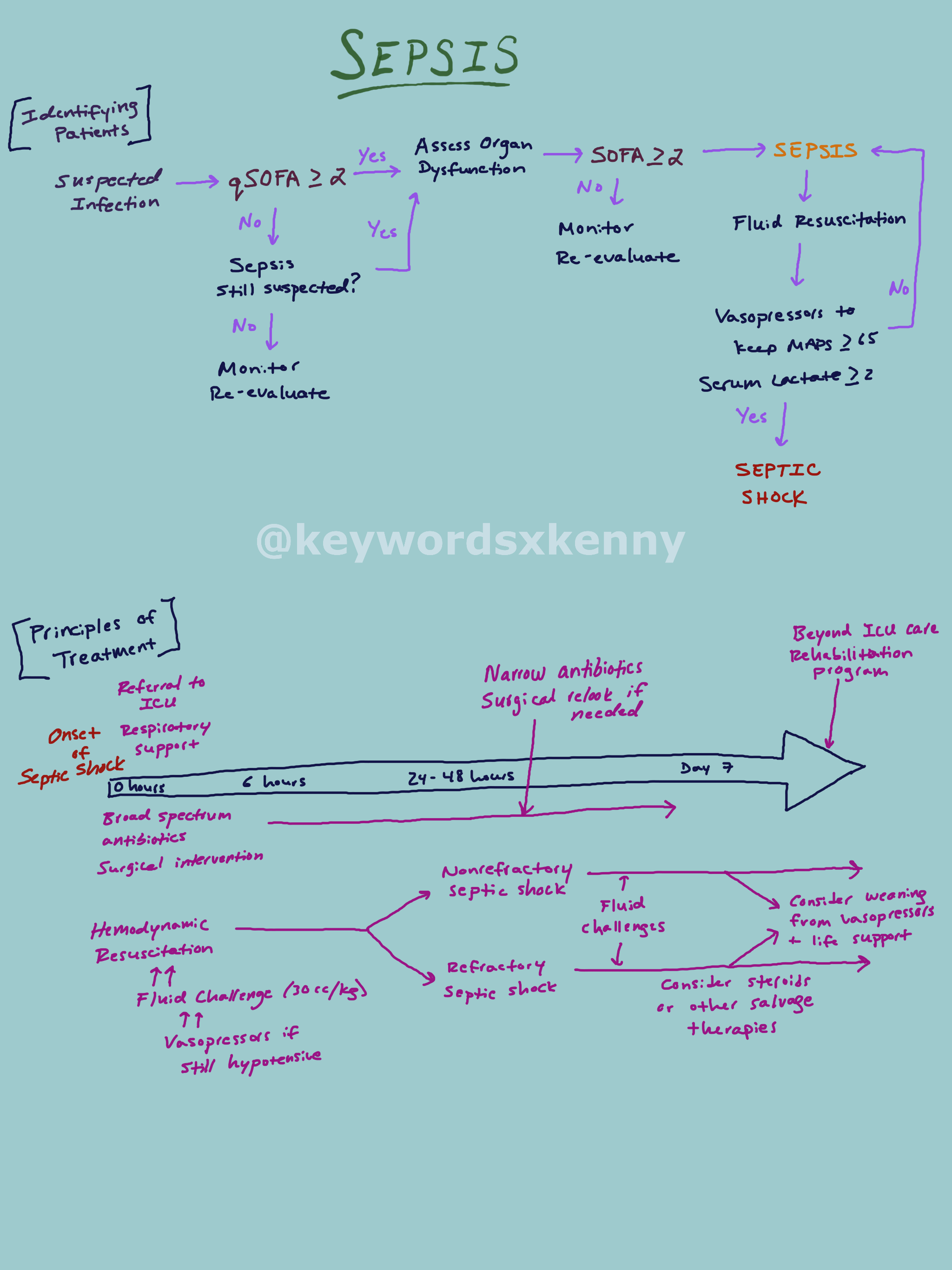Sepsis
This is a review of the pathophysiology of sepsis, common places for infections, management steps, and risk stratification using SOFA.
Sepsis is a complex, multi-system syndrome that results from an infection. It is the leading cause of death in critically ill patients. Sepsis is commonly seen in the peri-operative period and can lead to an admission into the surgical intensive care unit.
Sepsis is the result of a complex interaction between a patient’s immune, inflammatory, and coagulation systems triggered by an infecting organism. It starts as a local inflammatory response that becomes a systemic mix of pro-inflammatory and anti-inflammatory mediators. This leads to organ dysfunction and increased susceptibility to hospital-acquired infections, respectively.
The progression of organ system failure tends to follow a predictable course: hypotension from hypovolemia and vasodilation > ARDS > acute kidney injury > mental status changes > ileus > hepatic failure > myocardial depression > bone marrow suppression.
The SOFA (sepsis-related organ failure assessment) score was created to assess the severity of organ dysfunction in a septic shock patient. This scoring system can accurately predict the mortality of a septic patient in the ICU base on the degree of dysfunction of 6 organ systems: respiratory, coagulation, liver, cardiovascular, central nervous, and renal).
Common sites of infections include the lungs > abdominopelvic region > urinary tract > soft tissue > CNS.
The overall elements of sepsis management include initial resuscitation (30 cc/kg IV crystalloid fluid given within first 3 hours), diagnosis (appropriate cultures based on source), broad spectrum antibiotics, source control (surgical debridement/drainage/etc.), vasopressors, and supportive therapy (corticosteroids, lung protective ventilation, glycemic control, renal replacement therapy, DVT and gastric stress ulcer prophylaxis, optimal nutrition).
In 2015, the qSOFA (quick sepsis-related organ failure assessment) score was created to predict sepsis-related in-hospital mortality. The qSOFA includes 3 components: respiratory rate, altered mental status, and systolic blood pressure.


